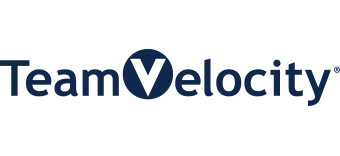
Imagine this…A customer walks into a dealership and is treated exactly like they are routinely treated online. They would meet a bunch of people, and it would go something like this:
Website: Hi, my name is Website. Thanks for stopping by. How can I help you today?
Customer: Hey, we are looking to check out the new 2022 Telluride, see what our trade might be worth, and get a feel for of our monthly payments to see if it works in our budget. If so, we are interested in purchasing over the next few days.
Website: Perfect, let me show you around. BTW, how did you hear about us?
Customer: Your friends, Google and Facebook, suggested you. They said your offers on the 2022 Telluride were awesome!
Website: Ok, but first just a word of caution. Whatever you and Google and Facebook discussed privately may not be the same information you get here. But not a big deal, right?
Anyway, let me introduce you to my helpful widget friends. Just to name a few…This is Chat, that’s Trade, and over there is Video. My friend Finance is awesome, VDP is my main man, and you might even get to meet Retail, but most people don’t get that far.
Let’s get started with Chat. Just so you know, she will jump around frantically to get your attention and bug you all day long, unless you just say “hi” and tell her who you are. If I were you, I would just do it, because if you don’t, she is never going away. No matter what. Seriously dude, I am not joking around. I see it all day long. It’s actually crazy.
Chat: Hey, how may I help you today?
Customer: Hi, can you start with giving me some info on the new Telluride?
Chat: Slow your roll stranger. How about you start by giving me all of your information in case you decide to leave quickly, and a member of my team needs to reach you…like maybe tomorrow, probably… or at some point soon?
Customer: Ok, I am already here though. Why can’t they just speak with me right now, before I leave? But, fine, here is all my contact info. Now can you please let me know about that new ’22 Telluride?
Chat: Hmmm, that is such an incredible question. Hang on for a minute while I check. Darn it, Customer. I am afraid a member of my team cannot answer your question, but we will try our best to call you back tomorrow, hopefully. Is there anything else I can possibly do for you today?
Customer: You have not done one single thing for me today. Literally.
Website: Hey Customer, welcome back. Just so you know I cannot see or hear anything that any of my widget friends say or do. It’s like they live in their own world. But let’s get you straight over to Trade and see what happens.
Trade: Hi there. Tell me all about your trade, and then I will obviously need all of your contact information, and then I can send you a value report.
Customer: Ok, here is all my trade information, but I literally just gave Chat all my contact info, can’t you get it from her? Don’t you all work here? It’s the exact same information she just asked for 30 seconds ago.
Trade: Listen Customer, I can see you are already frustrated because you have not gotten a single bit of useful information since you arrived and have repeatedly been asked to identify yourself. I am sorry to say that this is only the beginning. Every other widget friend will need the same information. It’s what we are born to do. We cannot share your information because technically, none of us work here. We are employed and powered by other companies. See my real logo. It’s better to think of us all as “certified” and completely independent contractors. We can only keep our job if we prove to the boss that each of us have separately obtained your contact information. It’s like our fun game. Anyway, then we send your info over to CRM. He is getting old; he still counts the leads with his 20-year-old ADF calculator. Does that make sense Customer, in some small way?
Customer: No, not even in the slightest. I came here to get information to buy a Telluride. So far, all you want is for me to give you information to send to CRM. I thought you wanted to sell me a new Telluride. Google had me so convinced I could get a great deal, and it would be easy.
Website: Hey buddy, welcome back. I get it, just keep your chin up. I am going to get you straight over to my main man, the one and only VDP. We try and make sure everyone here meets him.
VDP: Hey Customer, I promise I am going to get you exactly what you need. Sounds like someone needs a great price and a payment on this 2022 Telluride. Am I right?
Customer: Yes, thank you VDP. You seem friendly with Website, so can you please tell me how much our monthly payment would be on this Telluride, including our trade information that I just gave your colleague, Trade.
VDP: Didn’t Website already explain all that? Whatever info you gave Trade stays with Trade. Sorry, I basically need all your exact same information. Relax, take a breath, because you may or may not like this… but the “awesome offers” you first saw from Google, or anywhere else, before we met are not actually our very best price. Isn’t that surprisingly fantastic news? We have something special called an E-Price. BTW, nobody knows what the “E” stands for. I am pretty sure it’s supposed to be like our “Extra” Special very best price. But it is not here now, it’s in a secret hiding place. All I need is your information and a spot to send this extra special E-Price because you understand I cannot exactly give it you now, right? I hope you get it. Fingers crossed.
Customer: Whaaaat? We are standing in the middle of your showroom right now, and we are ready to buy a Telluride. I don’t get it? I already gave your widget friends all my information and I just want to know an idea of my extra special payments NOW. That’s why we came here in the first place. Is that too much to ask, VDP? I mean, isn’t this a super common question?
VDP: Chill Customer. Please don’t bounce on me. We do have one final last-ditch option, and that’s to introduce you to the biggest, baddest widget friend in the dealership, Retail. But I am warning you, once you two meet, we may never see you again. She is a lone wolf with her own unique style and has her own entirely separate way of doing things. But perhaps she just might be able to help you. Really, at this point what do you have to lose? Are you ready?
Customer: Sure, let me meet her. But first, please tell me that all your other widget friends, or you, Website, already gave her all my contact information, all my trade information, and all my shopping history. I can’t take explaining this 2022 Telluride again and again. I don’t want to answer the same questions again. PLEASE!
Retail: Hey Customer, you look beat. By the way, what’s your real name? If I am going to help you, we need to start over fresh, and I do not want to hear about your time with Google, Facebook, or Website either. That’s all in the past.
Customer: Seriously, Retail? You also need my contact information, trade information and the details of what I want, too? And why are your prices and payments different than your associates, Google, Facebook, and Website? Are you joking?
Retail: Nope. Look, whatever your name is, only 3% or so of people even get this far. You should feel great about your effort. You have worked so hard and met so many widgets. Let’s finish this thing. Now, again, what’s your name, how can I reach you later, what are you trading, and how are you paying for it?
Customer: OMG! Do you even know Website, VDP, Chat, or any of the other people I have dealt with along the way? And shouldn’t Website have been able to just give me all this basic information himself, quickly? I still do not have an ounce of information I originally asked for. It’s so maddening.
Retail: Look, I admit I do not know them well. Except we go to conferences together and party like rockstars 😊. But, just between us, I am always the last person you’re gonna meet. It’s just how it works at our dealership. Now, like I said, let’s relax and start from scratch. It’s much easier if we both pretend everything that happened before we met is erased from your memory like it never happened. Even though it did.
Customer: You have got to be kidding me.
Can you imagine if this is what the in-store experience was like?
If you know the automotive landscape, I hope you enjoyed a laugh or two, like I did while writing this. While fun to smile, we are seriously devoted to creating solutions that empower retailers to dramatically improve their customers’ experience, both online and offline.
The bottom line is this…a dealer’s sales process (inside their stores) would never mimic the online sales experience. I would argue the customer experience is currently far better, more informative, and logical inside the dealership. Online, it’s typically disjointed from the first click of an email or a digital ad all the way through to a website filled with widgets. It’s even worse on mobile devices. The current online shopping journey takes consumers from one siloed experience to another, littered with distractions along the way. This ecosystem has slowly developed over 20 years and was not designed to easily facilitate the most important result: a transaction. Dealerships cannot efficiently manage 8-10 companies, all with individual goals and technology, and expect to create a meaningful customer experience that generates a great outcome for their business.
Integration is a change already established in most other industries, but not automotive retail… yet.
I call it “Mission Improbable” because the current ecosystem was developed like separate pieces of a puzzle that were never designed to fit. Given the exceptional online experiences customers have in other areas of their lives, it’s improbable they will play hopscotch through the maze of inconsistencies in both offers and user experiences. This siloed ecosystem is unique to automotive, and it’s heavily supported by a financial model that rewards silos, OEM certifications, etc. It’s become the norm.
But what are the alternatives? I see two logical pathways to improvement. The first would be a format to share customers’ contact information and shopping data across different platforms. Real integration between various technologies. But, the chances of wide enough adoption are unlikely because the level of cooperation would require tech companies that fiercely compete to also agree. On top of that, growing consumer privacy regulations and security environments would prove challenging.
The more likely alternative is the birth of all-inclusive platforms that were designed, acquired, or both, to facilitate the entire customer journey from the creation and first click of an ad to the final click of scheduling a sales delivery or service, without any unnecessary interruptions, all originally engineered to work together seamlessly. But, platforms like this will take time to adopt because investors, dealers, and OEMs are accustomed to the current mindset. Integration is a change already established in most other industries, but not automotive retail… yet.
We are passionately committed to a better alternative that is facilitated by one, fully-integrated technology platform, designed from the ground up for all “widgets” to work together for customers and dealerships. It is how the rest of the world is already retailing, and we believe we can too.
David Boice
Team Velocity Co-Founder & CEO


 Consumer behavior and dealership operations have fundamentally changed for good. To survive and ensure profitability, dealers needed to adapt to the new reality quickly. The “reality” – digital adoption and technological advancement. This refers to the ability for consumers to access immediate information online about the dealership, vehicles in stock, service scheduling, and more. It refers to consistent, relevant, and personalized marketing through email, search, social and text campaigns. And more importantly, it relates to the ability to complete an entire transaction from start to finish, with pick-up and delivery, all without ever setting foot on the showroom floor. In return, this meant adjusting dealers’ marketing campaigns and finding a way to create a more seamless and frictionless customer experience.
Consumer behavior and dealership operations have fundamentally changed for good. To survive and ensure profitability, dealers needed to adapt to the new reality quickly. The “reality” – digital adoption and technological advancement. This refers to the ability for consumers to access immediate information online about the dealership, vehicles in stock, service scheduling, and more. It refers to consistent, relevant, and personalized marketing through email, search, social and text campaigns. And more importantly, it relates to the ability to complete an entire transaction from start to finish, with pick-up and delivery, all without ever setting foot on the showroom floor. In return, this meant adjusting dealers’ marketing campaigns and finding a way to create a more seamless and frictionless customer experience.


 Team Velocity designed Apollo to put the customer experience first, creating a frictionless experience that customers trust. With Apollo, you have one technology platform with a suite of integrated applications that simplifies your processes and reduces costs by eliminating the need for multiple vendors and plug-ins. Apollo ensures consistent offers, creative and messaging across every online and offline customer touchpoint and provides an Amazon Prime-like experience for every customer, with personalized websites dynamically configured to their specific information. Apollo’s intelligent and personalized campaigns not only deliver a better customer experience, but are proven to increase sales and service growth year over year.
Team Velocity designed Apollo to put the customer experience first, creating a frictionless experience that customers trust. With Apollo, you have one technology platform with a suite of integrated applications that simplifies your processes and reduces costs by eliminating the need for multiple vendors and plug-ins. Apollo ensures consistent offers, creative and messaging across every online and offline customer touchpoint and provides an Amazon Prime-like experience for every customer, with personalized websites dynamically configured to their specific information. Apollo’s intelligent and personalized campaigns not only deliver a better customer experience, but are proven to increase sales and service growth year over year.
